TRADITIONAL TURKISH MARBLING
Printed From: IslamiCity.org
Category: Culture & Community
Forum Name: Islamic Arts & Literatures
Forum Description: Display and Discuss Islamic Arts & Literatures (Painting, Photo, Poem, Caligraphy, etc)
URL: https://www.islamicity.org/forum/forum_posts.asp?TID=5822
Printed Date: 21 November 2024 at 9:51pm
Software Version: Web Wiz Forums 12.03 - http://www.webwizforums.com
Topic: TRADITIONAL TURKISH MARBLING
Posted By: Suleyman
Subject: TRADITIONAL TURKISH MARBLING
Date Posted: 10 July 2006 at 12:09pm
|
TRADITION
The Turkish art of ebru which is known to be practiced in Istanbul for more than five hundred years and known as "Turkish paper" for centuries in the western world certainly has a tradition which is passed from generation to generation by a master and apprentice relationship. The most important evidence that ebru is a Turkish art with origins from Central Asia is its terminology in the Europen languages. The words "battal", "tarakli", get-gel", kumlu" etc. are all used to mean the same thing in almost all countries where ebru is practiced. Ebru is an art which cannot be learnt by reading or listening as all other Ottoman Arts. It is extremely difficult as regards to its performance and effected by various parameters which are outside the control of a beginner. In order to overcome all these difficulties and guide the novice marbler to understand what he/she is doing so that technically perfect results are achieved, the guidance of a master is needed. It is seen that there is no marbler without a master and the tradition is passed from generation to generation by a master and apprentice relationship if our history of ebru is examined. Ebru learnt without a master has no relation with our tradition. One of the most important characteristics of our tradition is the use of natural earth pigments which belong to the chemical family of metal-oxides and other natural dyeing material all of which are not chemically soluble in water. The primary reason for using earth pigments is that the marblers lived centuries ago had no choice of making dyes other than the nature itself. Later marblers used dyes of the same origin to imitate their predecessors, to continue the tradition in terms of colour and appearance and to make the marbled papers permanent. It will be useful to clarify what is meant by "permanent". During production of ready to use, off the shelf fabricated dyes, various acids and casein are added and by experience, it has been found that these acids burn the paper hence the binding or the calligraphy where ebru is used. This is shown in the following photograps :
The first pair of photographs belong to a piece of hatip ebrusu made by Necmeddin Okyay or Mustafa Duzgunman probably during fifties when they were not aware of the fact that fabricated dyes burn the paper. On the reverse of the paper, it may be seen very clearly that the black dye which contains foreign material have burnt the paper. The second pair of photographs were taken from the book of "Marbling" by Jane Pheobe Easton and belongs to an original ebru paper by Ingeborg Borjeson. On the reverse of the paper, it is again easily seen that foreign material which are added to the dye during fabrication have burnt the paper. In the restoration of centuries old books, ebru papers made with dyes containing acids can never be used because of the acids in the dyes. Another important reason for using natural earth pigments is that their resistance to light is perfect and their colours never fade. The colours seem to be faded in old ebru papers because the technique then wasn't as perfect as today. The colours of some ebru papers of Edhem Efendi, Necmeddin Okyay and Mustafa Duzgunman have faded because they have tried ready to use dyes manufactured after industrialization. However, following a complaint, Mustafa Duzgunman has painted all the dyes he could have found on a piece of paper and placed the paper on the window of his work place. Some time later, he found that colours of all the dyes except natural earth pigments and indigo have faded and decided to use only natural dyes. The nature offers so many colours which are under the sun for millions of years bu never faded. Therefore all kind of natural dying material which is not fading in light, not containing acids and not soluble in water have been used and can be used in traditional Turkish ebru. Another important characteristic of traditional Turkish ebru is that the papers used are never treated with alum or anything else and the ebru paper is stripped off the marbling tray such that no unnecessary size is left on the paper. Ready to use gouache, acrylic or natural whatever dye is used, if the balance between the thickness of the liquid and the amount of water and ox-gall in the dyes is properly achieved, the quality of the resulting ebru is always the same whether the paper is treated with alum or not. The paper has to be washed off to clean the remaining size on the paper if the paper is treated with alum prior to marbling. This results in a huge amount of waste of size. Treating the paper with alum is a method used by inexperienced marblers to get rid of the need of accurately adjusting the amount of water and ox-gall in the dyes. For the reasons given above, the ebru paper is never treated with alum in traditional Turkish ebru. Another characteristic of traditional Turkish ebru is the designes created.
In Turkey, ebru is traditionally used in bookbinding and calligraphy. Turkish ebru artists have produced "hatip ebrusu", kumlu ebru", koltuk ebrusu" and "battal ebru" for calligraphers and bookbinders. For the marblers of the nations which don't have an art of calligraphy like us, producing "hatip ebrusu", kumlu ebru" and "koltuk ebrusu" or flower designs to be used in bookbinding which are admired by the marblers who use other techniques may not mean anything but in order to make Turkish calligraphers and bookbinders able to perform their arts in accordance with our tradition, producing the abovementioned ebru types is also a tradition of Turkish art of ebru. One other important characteristic of our tradition is related with the shapes. Turkish ebru artist makes his/her own brushes using horse hair. Due to the arrangement of the hair around the rose stick and the curled shape caused by leaving the brush in the dye cup, a special "battal" shape is created on the size.
This cannot be done with other brushes. Therefore using hand made horse hair brushes is a tradition of Turkish ebru. |
|||||||||||||||||||||||||||||||||||
Replies:
Posted By: Suleyman
Date Posted: 10 July 2006 at 12:34pm
|
||||||||||||||||||||||||||||||||||||||||||||||||||||||||||||||||||||||||||||||
Posted By: Suleyman
Date Posted: 10 July 2006 at 12:40pm
|
Posted By: Suleyman
Date Posted: 10 July 2006 at 12:43pm
http://www.photo.net/photodb/photo?photo_id=4223754"> http://www.photo.net/photodb/photo?photo_id=4223743"> http://www.photo.net/photodb/photo?photo_id=4223743"> http://www.photo.net/photodb/photo?photo_id=4223726"> http://www.photo.net/photodb/photo?photo_id=4223726"> http://www.photo.net/photodb/photo?photo_id=4223705"> http://www.photo.net/photodb/photo?photo_id=4223705"> http://www.photo.net/photodb/photo?photo_id=4223641"> http://www.photo.net/photodb/photo?photo_id=4223641">
|
Posted By: DavidC
Date Posted: 10 July 2006 at 12:52pm
|
Beautiful! Why not make a Flickr library? That way artists can all appreciate the work. Get a free account on Flickr.com and UL the best quality possible. This is how most folk art collectors post their collections.
------------- Christian; Wesleyan M.Div. |
Posted By: Suleyman
Date Posted: 10 July 2006 at 12:55pm
|
Dear David,when you first addressed me to the photo.net,since from that time i enter to my account with remembering your name with my sincere regards... I trust your advice and go to flickr.com...take care... |
Posted By: ummziba
Date Posted: 11 July 2006 at 11:44am
|
Assalamu alaikum, Thank you for sharing this beautiful part of your heritage with us Suleyman! I particularly love the ones with flowers on them, they remind me of my garden.... Peace, ummziba. ------------- Sticks and stones may break my bones, but your words...they break my soul ~ |
Posted By: Suleyman
Date Posted: 11 July 2006 at 11:56am
Wa Alaykum Selam ve Rahmetullahi ve Berakatuh Sister, Always welcome,Jazak Allah Khair,take care!..... |
Posted By: schwester
Date Posted: 13 July 2006 at 5:46am
what a beauty.. playing with colours
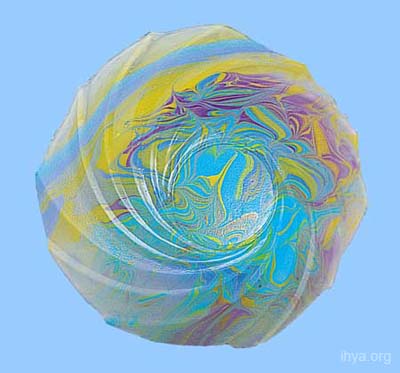
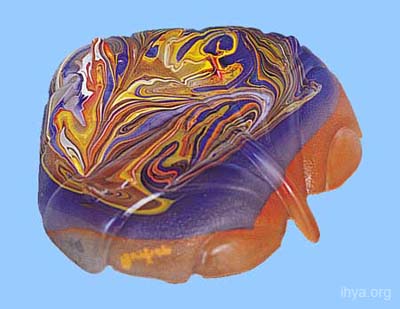
and so delicate isn't it.. this ebru art i see also in books. like it so much, how they do it? 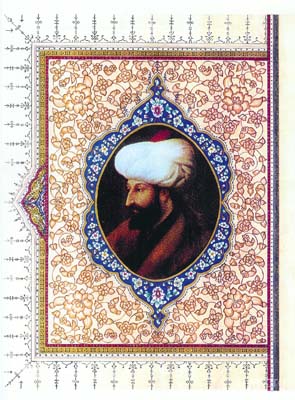
are these really osman dress code huh?? out of the topic but saw it on the same site where ebru 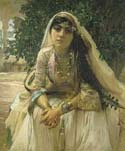
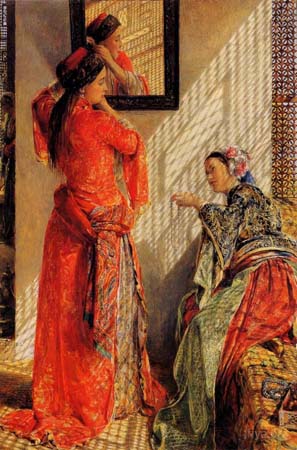
|
Posted By: Suleyman
Date Posted: 13 July 2006 at 6:56am
|
Thank you very much for your concern,it tells how can be done and they are all mad eon papers i do not think that they will be used on these clothes,i should ask to Benetton or Tiffany...take care... |
Posted By: schwester
Date Posted: 14 July 2006 at 10:44am
|
oh no please do not ask to Tiffany nor to Benetton! i beg, ask adidas. man, what you talking abaht? i just asked if girls in osmanic times really weared like thses, without headscarf?
and why quote? just wondering.. |



















































 ummziba wrote:
ummziba wrote: